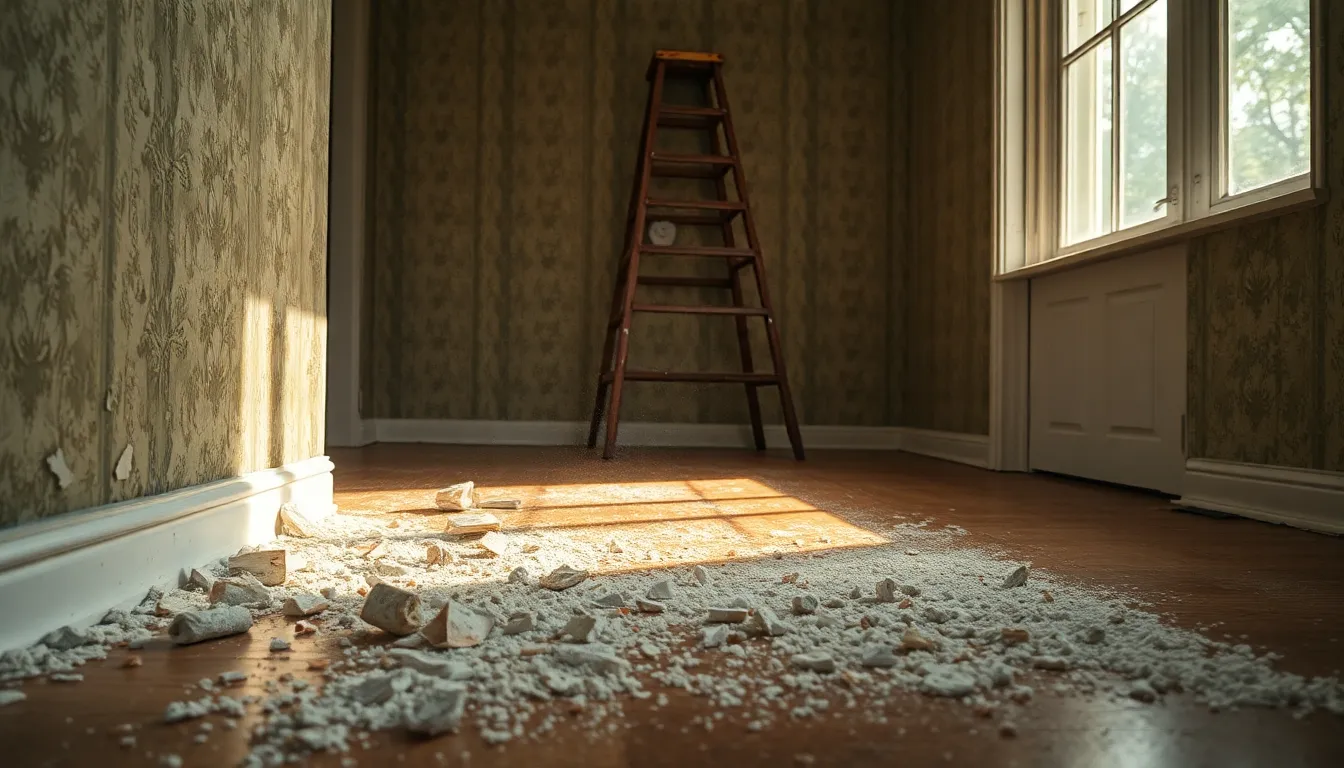Table of Contents
ToggleIn the process of buying or selling a home, dust and debris might seem like minor irritants. But, they can have significant implications for both the aesthetic appeal and market value of a property. HomeRocketRealty emphasizes the importance of understanding dust and debris in real estate transactions, as their presence can signal underlying issues and affect buyers’ perceptions. This overview explores what homeowners and potential buyers need to know about dust and debris, their sources, impact on property values, and effective management strategies.
Understanding Dust And Debris During Home Transactions

Dust and debris during home transactions can arise from various activities, including renovations, repairs, and even just the everyday living conditions of a home. Understanding the nature of these particles is vital, as they not only affect the cleanliness of a space but can also hint at larger problems within the property. HomeRocketRealty advises that both buyers and sellers should be vigilant about dust levels, since excessive buildup can be an indication of neglect or inadequate maintenance.
The presence of dust can also provoke allergies or respiratory problems, making it a critical consideration for potential buyers, especially those with sensitivities. Sellers should be proactive in addressing these issues to ensure that their home remains attractive to buyers.
Summarizing, dust and debris are more than just nuisances: they can represent the overall condition of a property and reflect how well it has been maintained.
Common Sources Of Dust And Debris
Understanding where dust and debris originate can help owners and buyers take preventive measures. Common sources include:
- Construction and Renovation: Any remodeling work often creates significant amounts of dust. From drywall work to flooring installation, these activities disturb settled particles and create new debris.
- HVAC Systems: Air ducts can harbor dust and allergens. If not regularly cleaned, these systems can circulate particles throughout the home.
- Outdoor Elements: Dust storms, pollen from plants, and even nearby construction can introduce external debris into homes. This is particularly relevant for properties located in developing neighborhoods.
- Pets: Fur, dander, and dirt brought in from outside can significantly contribute to indoor dust levels.
- Everyday Activities: Simple tasks like cleaning, cooking, and even walking can disturb dust that has settled on surfaces, redistributing it throughout a home.
Identifying the sources of dust is the first step in managing and mitigating its effects.
Impact Of Dust And Debris On Home Value
Dust and debris can considerably impact a home’s market value. When buyers enter a property, first impressions matter significantly. Excessive dust can create a negative perception, leading potential buyers to question the overall upkeep of the home. Here are several ways that dust and debris can affect home value:
- Negative Impressions: A dirty or dusty home can deter buyers, making them less likely to consider an offer.
- Increased Inspection Issues: Homes with visible dust and debris might raise red flags during inspections, leading to concerns about the health and structural integrity of a property.
- Remedial Costs: If buyers perceive that significant cleaning or renovations are necessary, they may offer lower bids to account for the potential costs involved in restoration.
- Health Concerns: Homes filled with allergens and dust can dissuade families, especially those with young children or elderly members, who may be particularly susceptible to respiratory issues.
Overall, keeping a home clean and free of dust not only enhances aesthetics but can preserve or even increase property values.
Strategies To Manage Dust And Debris
To maintain a clean environment and mitigate the presence of dust and debris, the following strategies are beneficial:
- Regular Cleaning: Carry out a consistent cleaning schedule that includes dusting, vacuuming, and mopping to prevent buildup.
- Air Filters: Change HVAC filters regularly to trap dust particles before they circulate in the home.
- Seal Openings: Make sure to seal any cracks in windows and doors to prevent outdoor dust from entering.
- Use Rugs and Mats: Placing rugs or mats at entry points can catch dirt and debris before it’s tracked through the home.
- Declutter: Minimizing clutter helps reduce dust accumulation on surfaces and makes cleaning more manageable.
By adopting these practices, homeowners can create a more inviting and healthier environment.
Best Practices For Homeowners And Buyers
Homeowners and potential buyers can take specific steps to navigate dust and debris challenges effectively:
- Conduct Thorough Cleaning Before Showings: Homeowners should ensure their properties are thoroughly cleaned before any viewings, taking special care in high-traffic areas.
- Communicate Concerns: Buyers should feel empowered to raise concerns about dust levels during the inspection phase. A well-informed buyer will benefit from understanding any potential implications of dust and debris.
- Invest in Professional Cleaning: Sometimes, it’s best to engage professional cleaning services, especially after renovation or heavy-duty cleaning is required.
- Maintain Good Ventilation: Good airflow can help minimize dust settlement. Keep windows open when weather permits and use exhaust fans to help air circulation.
By adopting these best practices, both buyers and sellers can enhance their experiences during home transactions.
Environmental Considerations In Dust Management
Managing dust and debris is not just a matter of aesthetics, it also has environmental implications. Some considerations include:
- Use Eco-Friendly Cleaning Products: Opting for biodegradable cleaners can minimize chemical exposure and environmental harm.
- Dust Control Techniques: Strategies like wet dusting can trap dust particles rather than merely disturb them, preventing them from becoming airborne again.
- Review Landscaping Practices: Homeowners should consider using native plants that require less maintenance and so produce less debris.
- Composting and Recycling: Encouraging composting while ensuring proper waste management can help minimize the debris that accumulates in landfills.
These practices not only manage dust effectively but also contribute positively to the environment.
Conclusion
Dust and debris might seem minor at first glance, but their presence can have significant implications for both home value and buyer perceptions. Understanding their sources, impacts, and management strategies provides invaluable knowledge for homeowners and buyers alike. By adopting proactive measures, individuals can create a more appealing and healthier living environment. HomeRocketRealty advocates for diligence in addressing issues related to dust and debris, ensuring that the real estate process is as smooth and beneficial as possible.



